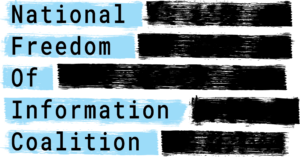
Miami Herald by Mary Ellen Klas, Steve Bousquet, and Kristin M. Clark
September 12, 2017
Floridians aren’t just facing a traffic bottleneck as they attempt to return home after mandatory evacuations from the storm, they are also facing an information juggernaut as Gov. Rick Scott’s office controls the flow of developments and delays the release of any bad news.
How many search and rescue operations had been conducted by state teams? Which roads are closed or blocked due to flooding? Which gas stations received a state highway patrol escort to receive gas? Which evacuation routes are facing fuel shortages? Which assisted living facilities were evacuated because of no generators?
State officials acknowledged Monday they track this data, but they wouldn’t make it available to the public.
State officials positioned search and rescue teams in the Keys and Marco Island, and made 22 Fish and Wildlife first responders available to help assist with evacuation efforts in Jacksonville as it faces historic flooding. So where are the rescues and how many have occurred?
“You’ll have to ask local officials,” said Alberto Moscoco, public information director for the Department of Emergency Management. It is an answer used frequently by the governor’s team of communications managers.
For the last week, Scott has been the state’s omnipresent voice before the cameras on storm preparation. His emergency operations team, working with many veteran emergency officials at the local level, escorted the state through an orderly and massive evacuation, pivoting quickly as the storm shifted to open shelters and order evacuations as the storm changed course.
Through it all, Scott’s office kept careful control of basic information, tamped down every attempt at flushing out reports about trouble spots that might reflect badly on the effort, and pushed out the positive messages, relying mostly on Twitter and Facebook streams.
His communications team blocked reporters from listening in to the twice-daily briefings in which emergency operations officials provide routine data about preparation, response, unmet needs and troubleshooting strategies. They excluded basic details from the twice-a-day reports distributed to the media on roads, evacuation routes, fuel shortages and elderly people stranded in harms way.
Since the governor first took office in 2011, he has viewed the media as an obstacle to control, not an asset to nurture, restricting access to information to a very small circle of spokespeople as they and he rely primarily on scripted talking points. But in a statewide emergency does this tight control over information matter?
Last week, the governor waited more than 12 hours to notify the public that driving on the shoulder was allowed on a stretch of I-75 clogged by people fleeing the storm. Scott said he didn’t need to announce it because “drivers knew.”
. . .
Previous administrations — both Govs. Jeb Bush and Charlie Crist — routinely opened the same hurricane briefings to the media. Last year, Scott’s staff even offered media access to a couple of similar briefings after Hurricane Matthew.
This week, reporters were forced to press their ears up to the window from the EOC’s media room, to try to get the information.
. . .
“In times of natural emergencies such as this, the media plays a critical and vital role in keeping the public informed,” said Barbara Petersen, director of the First Amendment Foundation, an advocacy group to which the Miami Herald and Tampa Bay Times belong. “During past administrations, the Florida media was allowed real-time access to emergency updates and briefings. Inexplicably, the Scott administration has suppressed media access to key information as Hurricane Irma poses a serious and very dangerous threat to the state.
“This change in policy is not only incomprehensible, its unconscionable.” [READ MORE]
